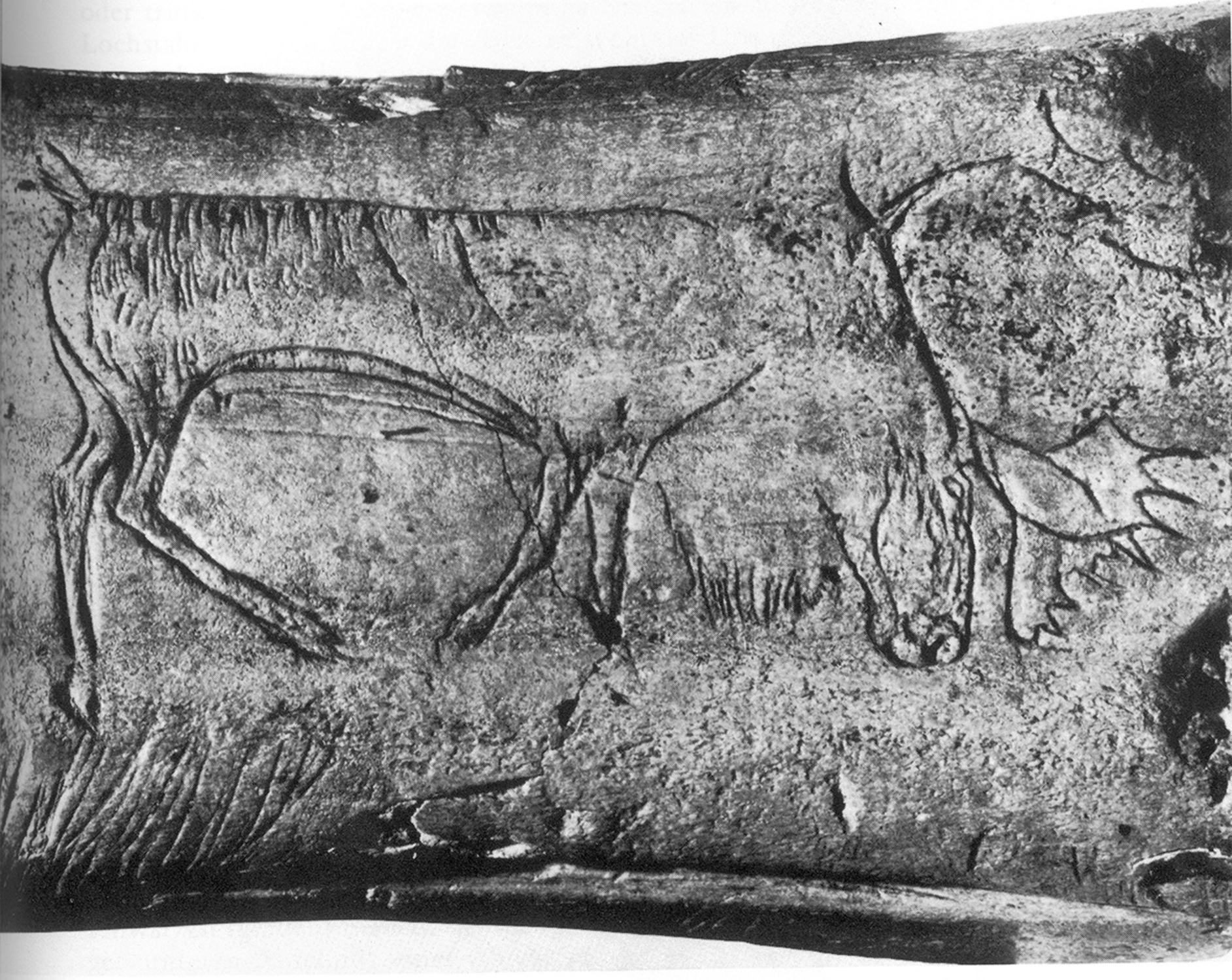
- Home
- More insights into the Magdalenian way of life
- The Magdalenian in Switzerland
- A network of societies
From palaeoenvironmental data (in particular data concerning available resources and their distribution across the landscape), it is possible to estimate that during the Magdalenian between 50 and 200 people lived in the area that is today Switzerland. Based on the siliceous materials commonly used, we can consider that the territory was divided into five or six small regions, each one occupied by an average of 25 people. These regional groups maintained regular contact with other communities from near and far, and of very diverse geographical origins. This vast communication network probably explains the surprising technological and stylistic unity seen across Europe in certain products, in spite of the very low population density.
Globalisation on a European scale
In Switzerland, “exotic” materials used for adornments, such as fossil shells and jet, came from diverse locations in all directions, including the Mainz Basin, the Paris Basin and the upper Danube region. A marine shell found in the Kohlerhöhle cave even came from the Mediterranean. The Rhône, Aare, Rhine and Danube rivers were the preferred routes for circulation in this exchange network involving groups that were sometimes several hundreds of kilometres from one another. These links between communities were maintained for social reasons (for example, “marriage”) and in case of possible crises that may arise.
Based on the geographical distribution of the sites and the varieties of flint used in the different Swiss camps, it appears that the groups mainly travelled along the south side of the Jura and did not cross its Haute-Chaîne mountain range. There is also no indication that they crossed the Alps, still partially covered by glaciers and with unstable slopes.



